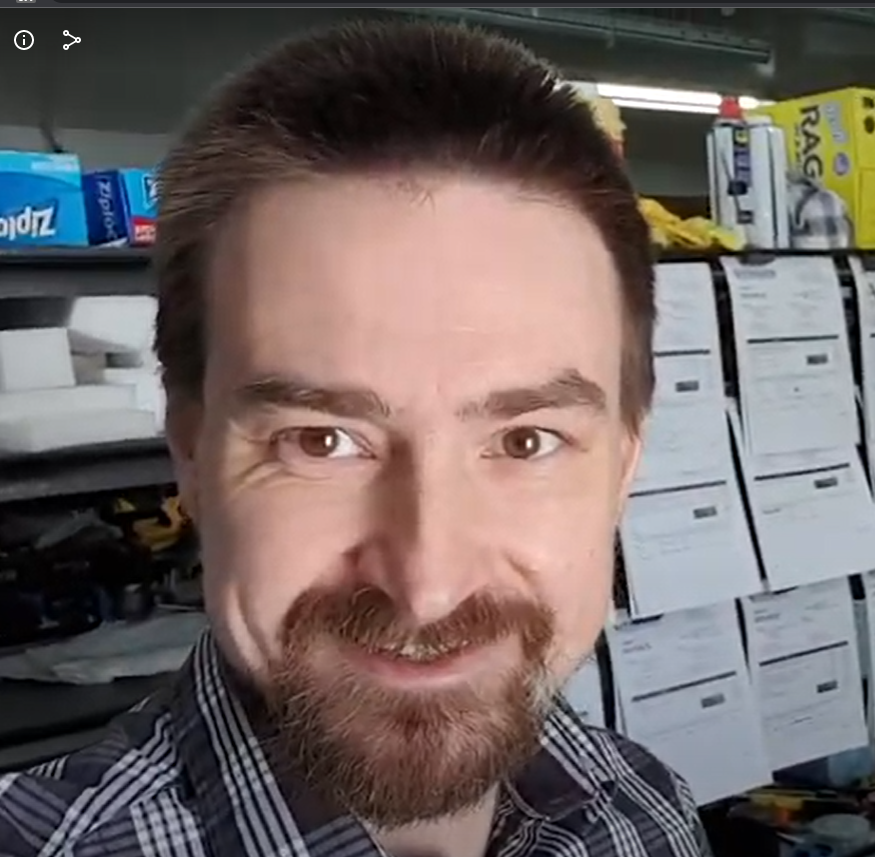Centrist, progressive, radical optimist. Geophysicist, R&D, Planetary Scientist and general nerd in Winnipeg, Canada.
troyunrau.ca (personal)
lithogen.ca (business)
- 31 Posts
- 523 Comments
Chicken and egg problem strikes again
I agree. And those decades of development come with huge advantages. Libraries. Patterns. Textbooks! Billions of lines of code you can cross reference and learn from!
It’s fun to bleed a little when you are tinkering. It’s not fun to have to reinvent the wheel because you choose a language that doesn’t have an existing ecosystem. That becomes and chicken-and-egg problem. The tinkerers fulfill this role (building out the ecosystem) and also tend to advocate for their tinkering language of choice. But there needs to be a real critical mass.
It takes decades to shift an entrenched ecosystem. Check in ten years if the following exist in languages other than C/C++: an enterprise grade database, a python(/etc.) interpreter that isn’t marked experimental, an OS kernel that is used somewhere real, an embedded manufacturer that ships the language as its first class citizen, a AAA game using it under the engine…
Like, in the last 15 years, I’m only aware of a single AAA game that used a memory safe language – Neverwinter Nights 2 used C# for part of the Electron Engine…
Rust is the most likely candidate here, although you see things like Erlang being used to make some databases (CouchDB). People see Rust being used on some real infrastructure projects that gain actual traction (polars comes to mind). Polars is an interesting use case though – it’s simply better than the other projects in its particular space and so people are switching to it not because it is written in rust at all… And honestly, that’s probably the only way this happens.
Certainly, if I had said that.
It’s like the Brits trying to convince everyone else to switch to their electrical socket. Sure, the design is better for higher voltage and current, has all these extra safety features, etc. But you cannot dramatically shift an entrenched ecosystem for free.
No.
C is going to be around and useful long after COBOL is collecting dust. Too many core things are built with C. The Linux kernel, the CPython interpreter, etc. Making C go away will require major rewrites of projects that have millions upon millions of hours of development.
Even Fortran has a huge installed base (compared to COBOL) and is still actively used for development. Sometimes the right tool for a job is an old tool, because it is so well refined for a specific task.
Forth anyone?
The rewrite-it-in-rust gang arrives in 3, 2 …

 14·7 days ago
14·7 days agoA good contrast is something like Outer Worlds, where there is usually multiple possible outcomes. I think it comes from their Fallout lessons learned and GURPS background. Love the game design. (Dislike the combat, but that is a separate thing.)
It’s very possible. Napkins are notorious for stealing orders of magnitude.

 5·7 days ago
5·7 days agoActually kind of an amazing read. I suspect it shall live another life on 3-axis router tables and such for a while. The mechanic is single stroke lettering remain the same
I ain’t doing hyperbolic equations on my napkin ;)
Instructions unclear, car stuck in dick.
Okay, napkin math… his nose is about 20cm long, and assuming it rotated about a perfect circle. The car moved say 10m. At the speed the car is moving, it covers that distance in ~120ns. So he has to move the end of his nose around a quarter circle of radius 20cm in 120ns. Let’s say 30cm total movement, for easy math. 0.25cm/ns or 0.00025m/ns. The speed of light is 0.300m/ns, so we’re talking about ~0.001c at the tip of his nose. Which is incidentally very close to the speed of sound in air.
So, probably not quite a sonic boom off the end of his nose. Assuming my math is correct. Very strong neck muscles. Also, he’s been vapourized.
Okay, just back of the envelope math. Assuming the car is truly 550nm, so the blue car is 400nm, and the red car is 700nm… How fast is the car going?
Napkin math says 0.27c.
Δλ=λ(V/c)
Now someone else can figure out the kinetic energy of the car and why the whole continent just exploded…

 2·9 days ago
2·9 days agoI use old.reddit in desktop mode still, on occasion. Today I clicked on a screenshot of a game cause I wanted more detail. I was directed to the new Reddit interface. I right clicked on the image and chose “open image in new tab” and got the new Reddit interface. I tried CTRL-scroll to zoom in the image, and it made the UI elements larger and in the process shrunk the image. I left the site.

 13·10 days ago
13·10 days agoFascism requires enemies, both internal and external. These enemies need to be painted as simultaneously: weak and can be crushed; but also so dangerous that they are destroying the country. Once the population accepts this rhetoric, the government can literally do anything.

 80·10 days ago
80·10 days agoOr, hear me out, they went public and now they are making their product worse as enshittification takes its toll.
Mercury feeling excluded

 1·14 days ago
1·14 days agoI was trying to keep my comment short(ish), but you’re not wrong. There are other complications :)

 6·14 days ago
6·14 days agokate
I use Kate – part of the KDE project ecosystem (for anyone else wondering) – on all platforms, including Windows. So worth it.

 4·14 days ago
4·14 days agoJust use wine on windows ;)







I’ll believe it when I see code written for it solving a real problem